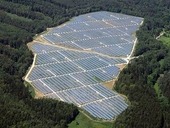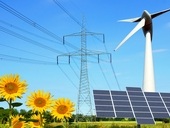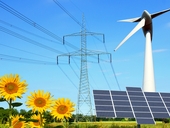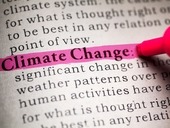Extended concept of the term electricity storage can greatly increase the possibility of storing electricity from renewable sources at a time when their production exceeds demand. The electricity could be stored not only using conventional technologies which returns electricity (P2P – power-to-power), but in form of heat or gas too (P2H – power-to-heat and P2G – power-to-gas). While conventional technologies P2P and P2H too allow to store energy for several hours or at most days, P2G technology in conjunction with underground natural gas storage has sufficient capacity for seasonal accumulation.
Archiv článků od 1.9.2014 do 5.1.2015
The aim of the Government Decree no. 91/2010 Coll., on conditions of fire safety during the operation of chimneys, flues and fuel appliances, is fire safety. However, the decree requires yearly fire checks even in the chimneys and flues from gas boilers, water heaters and heaters, i.e. where there a risk of fire is excluded.
The result is a growing number of fatal carbon monoxide poisoning – estimated up to 300 a year – and several times higher number of people with lasting health consequences. In the UK, where there it is not required to prevent a non-existent risk of fire in the chimneys and flues, but prevention against the risk of carbon monoxide poisoning, the number of fatal poisoning is about 100 times less (14 in the country with 60 million inhabitants).
Will be someone able to force civil servants to admit error and inform the public about effective prevention of carbon monoxide poisoning?
Foam polystyrol has been part of our lives for more than 70 years. The specific characteristic of the foam PS is light weight - 10-40 kg / m3, compared to 800-1050 kg / m3 for compact PS plastics. Current European consumption of expanded polystyrol is less than 2 million tons. It is necessary to add 400 thousand tons of XPS and approx. 100 thousand tons of foam PS foils used as packages and trays for food. Due to its low density it is a huge pile of waste.
Calculation model Degreedays (D°) have been integrated to the portal tzb-info.cz 10 years ago. This model enables determinate the count of Degreedays. For the calculation is possible to set up following data: internal temperature, external temperature and the date, when the heating season started and ended. The total number of observation stations in Czech republic gone up this year to 37 locations. For the calculation is possible to use the data from 2005 to present.
This article tries to summarize the available information about photovoltaic power plants operated in the Czech Republic. Apart from describing the current situation, it is therefore concerned with comparisons between photovoltaics and other kinds of RES; the photovoltaic production according to region; the distribution of power production according to size of the installations; legal personality of the operators and international comparisons.
Concept Data Support Department of the Ministry of Industry and Trade has prepared this statistical report as a comprehensive national statistics on renewable energy sources. The report focuses on the share of RES in the energy balance of the Czech Republic and describes in detail the development of the each RES categories, which are: biomass, biogas, liquid biofuels, solar, wind and water energy, heat pumps and renewable part of industrial and municipal waste. There is a description of methodology regarding data collection and consequent analysis at the beginning of each section (chapter) of the report. Data included in the report are fully comparable (compatible) with data which are reported on regular basis to International Energy Agency and Eurostat.
Concept Data Support Department of the Ministry of Industry and Trade has prepared this statistical report as a comprehensive national statistics on renewable energy sources. The report focuses on the share of RES in the energy balance of the Czech Republic and describes in detail the development of the each RES categories, which are: biomass, biogas, liquid biofuels, solar, wind and water energy, heat pumps and renewable part of industrial and municipal waste. There is a description of methodology regarding data collection and consequent analysis at the beginning of each section (chapter) of the report. Data included in the report are fully comparable (compatible) with data which are reported on regular basis to International Energy Agency and Eurostat.
Concept Data Support Department of the Ministry of Industry and Trade has prepared this statistical report as a comprehensive national statistics on renewable energy sources. The report focuses on the share of RES in the energy balance of the Czech Republic and describes in detail the development of the each RES categories, which are: biomass, biogas, liquid biofuels, solar, wind and water energy, heat pumps and renewable part of industrial and municipal waste. There is a description of methodology regarding data collection and consequent analysis at the beginning of each section (chapter) of the report. Data included in the report are fully comparable (compatible) with data which are reported on regular basis to International Energy Agency and Eurostat.
The goal of this paper was to inform about the development of the building integrated photovoltaic thermal (PV-T) system and evaluate its performance in compared to PV installation built of same photovoltaic cells. The study was collaboration among the Technical University of Denmark (DTU and Danish company RAcell (end-reference to website). This project was applied and optimized with the coupled house system on FOLD house, built in purpose of international student competition Solar Decathlon Europe 2012 held in Madrid in September 2012. The proposed PVT system was awarded with first price in Solar system integration sub-contest, during the competition SDE 2012.“Highly effective and innovative integration of PV and thermal systems that is not only a machine added to a house, but added value without creating too much attention to that machinery,” said one of the jury members about the PVT system, announcing the winner.
The PV-T is a hybrid system where the significant growth of efficiency of electricity generation is caused by cooling the cells to optimal temperature by system of embedded pipes on the backside of photovoltaic panels. The thermal part removes the heat, cools down the cells and increases its el. production up to 14,8 % according to PV system using the same cells in the same weather conditions. New solution was carried out for piping connection between panels. The house integrated PV-T system was compared with separate Photovoltaic and Thermal systems from energy and economy point of view. For annual usage of the FOLD house in Spain and Denmark was the PV-T system found as a more beneficial in compare to two separate systems.
The issue of energy utilization of waste and the connected construction of new facilities is a very actual phenomena. The article addresses primary the trends of waste treatment and contemplates the option of energy utilization of waste from different perspectives. In a not insignificant part of the article is described the waste as a fuel, which means its composition and properties. This article is first from a prepared miniseries about waste.
Waste water that ends up in the sewer network contains a large amount of energy. Utilization of this energy, which is also available throughout whole year, is not yet part of the standard engineering practice in the Czech Republic. This article brings an inspiration in the form of experience from Austrian city of Amstetten, where was implemented a project, which is using combination of a sewage heat exchanger and a heat pump. State of the art as the same as the factors affecting the utilization of waste heat are also included.
The article, with its theme of gear just beginning to cell cycle at a relatively broad topic of “thermodynamic phenomena in the pipeline and its surroundings”, describes the current situation in the field of pipeline networks and in the field of energy related equipment, determining the operating condition of the whole heating systems. This is essentially a search condition and trends of modern heating, working as using conventional manufacturing processes, as well as the application of engineering principles and methods in the field of far less obvious. This two-part article, articles and downstream, is also setting research targets thermodynamic and hydraulic phenomena in pipes and in its vicinity, which gradually obtaining knowledge useful in practice, will be precisely processed using mathematical, mostly numerical, models.
The highest representatives of more than 120 countries accepted the invitation to the UN Climate Summit 2014. In addition to these UN Secretary General Ban Ki-moon invited representatives of financial and commercial institutions and civil society. The aim was to encourage and accelerate climate action. Ban Ki-moon requested them to announce bold measures and actions to reduce emissions, strengthen climate resilience and mobilize political will towards meaningful legal agreement in 2015.
Representatives of Countries presented their statements, but only rarely there was mentioned a specific reduction in CO2 emissions. Generally it can be said that most states are willing to contribute to reducing CO2 emissions “appropriately”. The question is what this word means in their imagination.
While shale gas is being hyped as a green energy option, experience from USA shows that the dynamics of the industry is rather similar to a bubble. Europe has a different geology, its legislation is not ready and the technology itself has been shown to carry substantial risks for the environment and human health.
The article, with its theme of gear just beginning to cell cycle at a relatively broad topic of “thermodynamic phenomena in the pipeline and its surroundings”, describes the current situation in the field of pipeline networks and in the field of energy related equipment, determining the operating condition of the whole heating systems. This is essentially a search condition and trends of modern heating, working as using conventional manufacturing processes, as well as the application of engineering principles and methods in the field of far less obvious. This two-part article, articles and downstream, is also setting research targets thermodynamic and hydraulic phenomena in pipes and in its vicinity, which gradually obtaining knowledge useful in practice, will be precisely processed using mathematical, mostly numerical, models.
District Heating Association of the Czech Republic in late July issued a press release in which reacts to the latest proposal by the European Commission. According to the Commissioner for Energy Günther Oettinger, EC is going to order that EU Member States ensure without obligation energy savings equal to 30 % by 2030.
Existing lapses and mistakes during renewable energy sources development planning can be now avoided via unique program called RESTEP. RESTEP can easilly find available resources at given area and determine whether it is worthwhile to use them or not. Aim of this article is to introduce RESTEP, what it is good for, how does it work, who developes it and who will benefit from it.
Data needed for planning of energy use of RES are now available in one place through interactive map called RESTEP (regional sustainable energy policy). Authors describe RESTEP as RSA - regional source assessment. RESTEP recognizes what renewable energy soureces the selected location can offer, and then this potential derives a proposal of optimal mix of energy technologies. RESTEP is being developed at the Czech Agricultural University in Prague in cooperation with the Ministry of Environment and a number of other institutions.
The article describes important new information about resolving the central heating. Heating is different from circulating water supply by solving transmission capability of pipe networks and by solving the power control. The article deals with the first of real heating characteristics – transmission capability of isolated and non-isolated pipe networks.
zpět na aktuální články



















